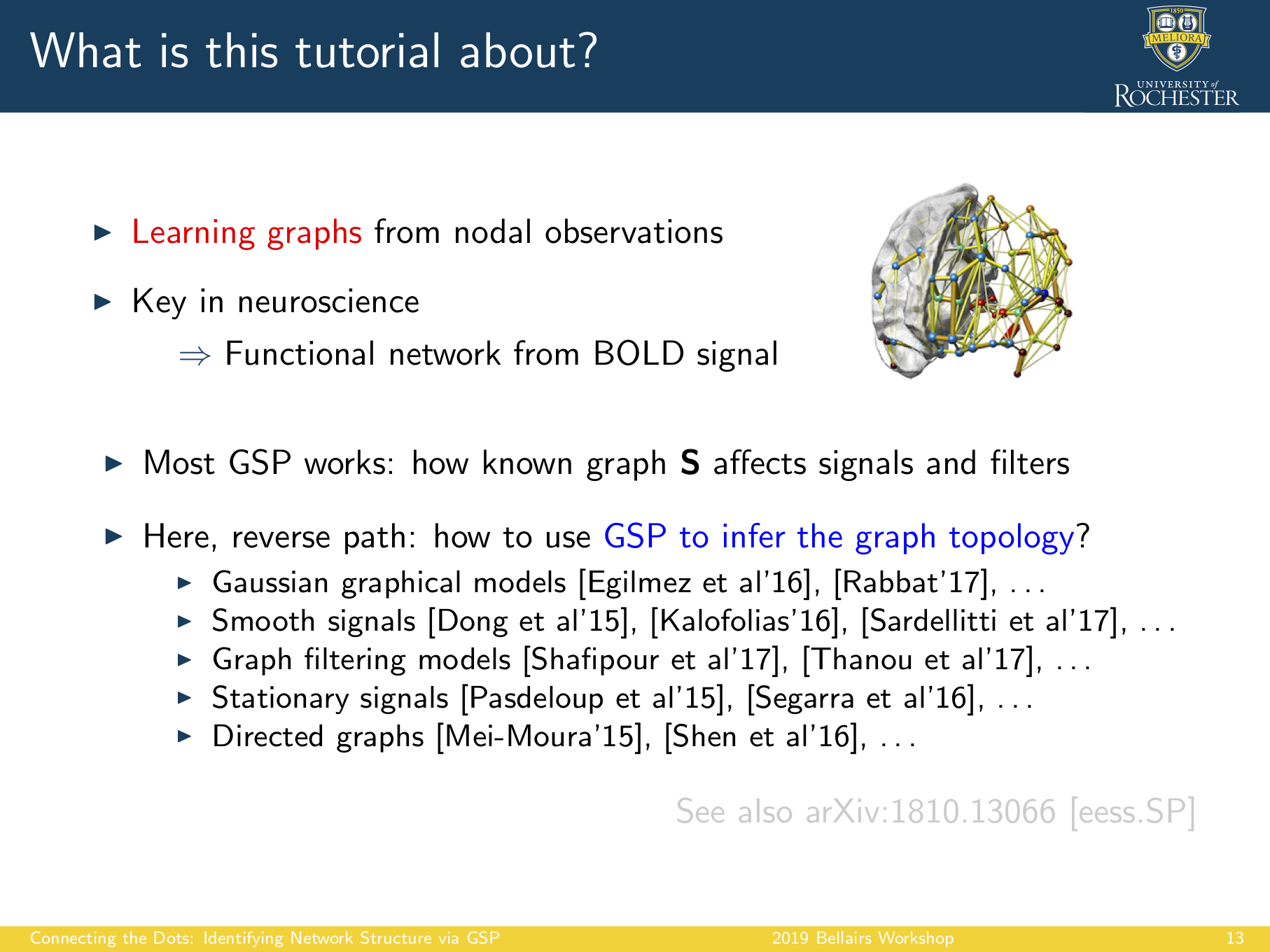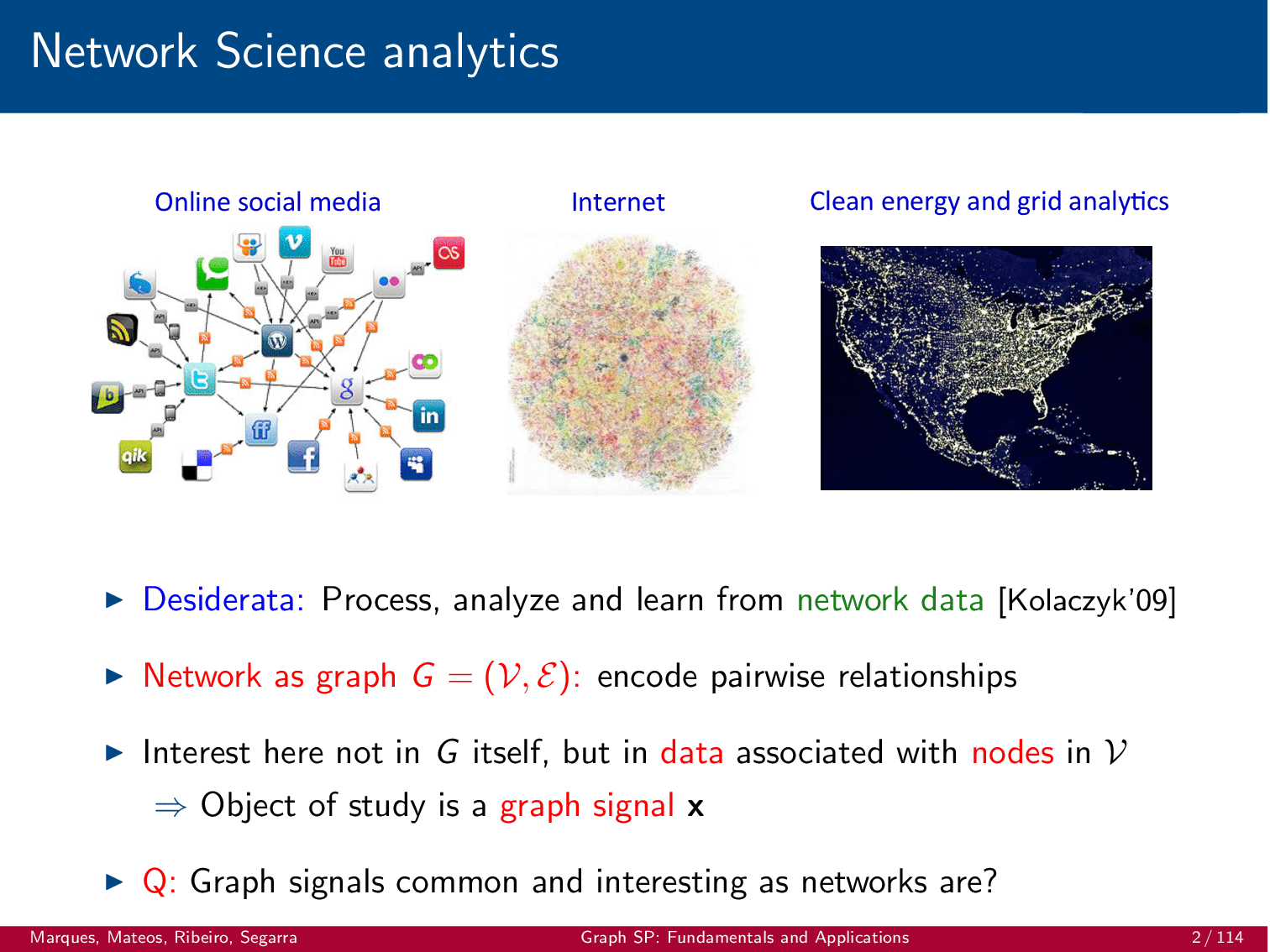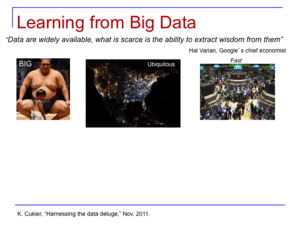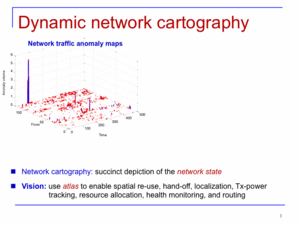Connecting the Dots: Identifying Network Structure of Complex Data via Graph Signal Processing

Under the assumption that the signals are related to the topology of the graph where they are supported, the goal of graph signal processing (GSP) is to develop algorithms that fruitfully leverage this relational structure, and can make inferences about these relationships even when they are only partially observed. Many GSP efforts to date assume that the underlying network is known, and then analyze how the graph’s algebraic and spectral characteristics impact the properties of the graph signals of interest. However, such an assumption is often untenable in practice and arguably most graph construction schemes are largely informal, distinctly lacking an element of validation. In this tutorial we offer an overview of network topology inference methods developed to bridge the aforementioned gap, by using information available from graph signals along with innovative GSP tools and models to infer the underlying graph structure. It will also introduce the attendees to challenges and opportunities for SP research in emerging topic areas at the crossroads of modeling, prediction, and control of complex behavior arising with large-scale networked systems that evolve over time. Accordingly, this tutorial stretches all the way from (nowadays rather mature) statistical approaches including correlation analyses to recent GSP advances in a comprehensive and unifying manner. Through rigorous problem formulations and intuitive reasoning, concepts are made accessible to SP researchers not well versed in network-analytic issues. A diverse gamut of network inference challenges and application domains will be selectively covered, based on importance and relevance to SP expertise, as well as the authors' own experience and contributions.
The authors and co-presenters of this tutorial are:
- Gonzalo Mateos (University of Rochester).
- Santiago Segarra (Rice University).
This tutorial will be presented at the 2019 Bellairs Workshop on Machine Learning and Statistical Signal Processing for Data on Graphs, the 2019 IEEE SPS-EURASIP Summer School on Network- and Data-driven Learning, EUSIPCO'19 (Photo 1, Photo 2, Photo 3), and CAMSAP'19 (Photo 1, Photo 2). A survey paper which served as the basis for this tutorial is:
G. Mateos, S. Segarra, A. G. Marques and A. Ribeiro, ``Connecting the dots: Identifying network structure via graph signal processing,'' IEEE Signal Processing Magazine, vol. 36, no. 3, pp. 16-43, May 2019.

If you are interested in the tutorial slides, please send me an email at gmateosb at ece dot rochester dot edu
Graph Signal Processing: Fundamentals and Applications to Diffusion Processes

The tutorial consists of two parts of similar length: an introduction to the basics of Graph Signal Processing (GSP), which will review and illustrate main existing results, and the application of GSP-tools to distributed network processing and diffusion processes over networks. The first part introduces the field of GSP, motivates its usefulness via meaningful applications, and presents in a didactic yet concise manner its foundational concepts, which have been derived over the past five years. The second part focuses on contemporary results. We will first illustrate that GSP is well suited to model and study diffusion processes over networks. With this premise in mind, we revisit classical SP problems such as sampling, interpolation, system identification, and filtering. We first present the theoretical results and then discuss their implications for distributed and dynamic processing. Furthermore, we illustrate the utility of applying GSP to analyze dynamics on networks through a diverse gamut of applications from social sciences to biology, spanning well-established problems like consensus and emerging neuroscience challenges like brain state induction.
The authors and co-presenters of this tutorial are:
- Antonio G. Marques (King Juan Carlos University, Spain).
- Gonzalo Mateos (University of Rochester).
- Alejandro Ribeiro (University of Pennsylvania).
- Santiago Segarra (University of Pennsylvania).
This tutorial will be presented at SAM'16, EUSIPCO'16, and GlobalSIP'16.
If you are interested in the tutorial slides, please send me an email at gmateosb at ece dot rochester dot edu
Signal Processing for Big Data

We live in an era of data deluge. Pervasive sensors collect massive amounts of information on every bit of our lives, churning out enormous streams of raw data in various formats. While Big Data can be definitely perceived as a big blessing, big challenges also arise with large-scale datasets. The sheer volume of data makes it often impossible to run analytics using a central processor and storage, and distributed processing with parallelized multi-processors is preferred while the data themselves are stored in the cloud. As many sources continuously generate data in real time, analytics must often be performed "on-the-fly" and without an opportunity to revisit past entries. Due to their disparate origins, the resultant datasets are often incomplete and include a sizable portion of missing entries. In addition, massive datasets are noisy, prone to outliers, and vulnerable to cyber-attacks. These effects are amplified if the acquisition and transportation cost per datum is driven to a minimum. Overall, Big Data present challenges in which resources such as time, space, and energy, are intertwined in complex ways with data resources.
Given these challenges, ample signal processing (SP) opportunities arise. This tutorial seeks to provide an overview of ongoing research in novel models applicable to a wide range of Big Data analytics problems, as well as algorithms and architectures to handle the practical challenges, while revealing fundamental limits and insights on the mathematical trade-offs involved. The goal is to selectively cover a diverse gamut of Big Data challenges and opportunities through a comprehensive tutorial surveying methodological advances, as well as more application-oriented topics and illustrative examples.
The authors and co-presenters of this tutorial are:
- Georgios B. Giannakis (University of Minnesota).
- Gonzalo Mateos (University of Rochester).
- Kostas Slavakis (University of Buffalo).
This tutorial will be presented at ICASSP'14 (Photo 1, Photo 2) and EUSIPCO'14 (Photo 1, Photo 2). An updated version of this tutorial entitled "Signal Processing Tools for Big Data Analytics" will be presented at ICASSP'15, EUSIPCO'15, and SPAWC'16. A survey paper which served as the basis for this tutorial is:
- K. Slavakis, G. B. Giannakis, and G. Mateos,
``Modeling and optimization for Big Data analytics,'' IEEE Signal Processing Magazine - Special issue on
`Signal processing for Big Data,' vol. 31, no. 5, pp. 18-31, September 2014.


If you are interested in the tutorial slides, please send me an email at gmateosb at ece dot rochester dot edu
Cartography for Cognitive Networks

Communication networks have evolved from specialized, research and tactical transmission systems to large-scale and highly complex interconnections of intelligent devices, increasingly becoming more commercial, consumer-oriented, and heterogeneous. Propelled by emergent social networking services and high-definition streaming platforms, network traffic has grown explosively thanks to the advances in processing speed and storage capacity of state-of-the-art communication technologies.
As "netizens" demand a seamless networking experience that entails not only higher speeds, but also resilience and robustness to failures and malicious cyber-attacks, ample opportunities for signal processing (SP) research arise. The vision is for ubiquitous smart and cognitive network devices to enable data-driven statistical learning algorithms for distributed, robust, and online network operation and management, adaptable to the dynamically-evolving network landscape with minimal need for human intervention. The present tutorial aims at delineating the analytical background and relevance of SP tools to dynamic network monitoring, introducing the notion of network cartography -- a framework to construct maps of the dynamic network state in an efficient and scalable manner tailored for large-scale cognitive networks.
The authors and co-presenters of this tutorial are:
- Georgios B. Giannakis (University of Minnesota).
- Gonzalo Mateos (University of Rochester).
This tutorial will be presented at SAM'14, ICC'13 and Globecom'13. A survey paper which served as the basis for this tutorial is:
- G. Mateos and K. Rajawat,
``Dynamic network cartography,'' IEEE Signal Processing Magazine - Special issue on
`Adaptation and learning over complex networks,'
vol. 30, no. 3, pp. 129-143, May 2013.
 Errata
Errata
If you are interested in the tutorial slides, please send me an email at gmateosb at ece dot rochester dot edu
